There’s a lot of talk lately about how equipment finance companies will create a digital customer experience in today’s environment. To transform the customer experience, equipment finance companies must make creating a digital customer experience a priority.
Recently, LTi’s SVP and CTO, Philip Rieck, participated in Equipment Leasing and Finance Association’s (ELFA) Webinar: Pay Attention to That CTO Behind the Curtain. The discussion was around merging IT and business together and the value behind doing so. Today, we will recap on six key questions and answers from ELFA’s webinar and how industry experts advise on how to fuse IT and business together to respond to the industry’s needs in real time.
1. Can you buy a digital experience or must the company build it out?
The best place to start is defining the customer journey and then mapping out all the touchpoints in your organization. For instance, Philip Rieck, SVP and CTO of LTi made a good point, saying, “When we’re looking at a build versus buy for a digital experience, you have to start with a digital experience strategy. Mapping out customer touchpoints is surely step number one. However, you’re also going to end up building a digital experience that is customized and tailored to your customer’s journey with you. You’re going to build that out of components that you buy. Nobody wants to invest their entire budget in building internal-only tools. Rather, use best of breed tools that you’ve bought as digital experience Lego bricks that you can integrate together and build an experience that truly identifies you to your customers.”
2. As you think about that journey and creating that experience, what are some of the critical solutions or capabilities that companies should be focusing on to prepare them for today’s environment and for tomorrow’s uncertainties?
This question really is about business and IT collaboration and how to bring about the digital customer experience through partnership. As Philip Rieck, SVP and CTO of LTi, answers, “I think one of the things you’re seeing today is that there is a lot of uncertainty and risk. Uncertainty really provides both risk and opportunity at the same time. One of the things we’re seeing is a shift to more of an open API. On the previous question, we talked about a platform that we can build digital experiences on top of and that really comes down to the same as internal experiences. You need to make sure we have the ability to build in best of breed solutions. There is no more of this ‘one system will do everything’ approach. In a digital world, you need to be able to pick best of breed solutions and integrate them together.”
3. Does COVID-19 create an openness to digital tools and advanced technology concepts that perhaps may not have been previously valued in our industry or has that accelerated that process?
Everyone is now rethinking business and it is causing us to refocus and get things done. It is a mindset and culture shift with business and IT merging. For instance. Philip Rieck, SVP and CTO of LTi, said, “It’s not also just a mindset shift but it is gone to say business and IT have to work collaboratively together. At this point, we are seeing more and more shift towards IT and business merging. IT has to be very business savvy and business has to be very IT savvy. These cross-functional teams are looking at solutions not just from a workflow process solution but also how do we enable workflow and process with technology? Digital documents are a great example. You have groups together that are aware of that technology and will talk about how electronic signatures can make specific processes move faster.”
4. Given the nature of the COVID-19 interruption, do you see a need to refocus areas of available technology, perhaps predictive analysis or other things?
There is a broader need for data science. We’re going to need to apply new levels of thinking to how we interpret data. For example, Philip Rieck, SVP and CTO of LTi, points out, “We’re going to see that in more and more predictive analysis, there is going to have to be a notion of agility. Whether you call analytics machine learning, there also has to be business learning at the same time. We have to make sure that people are not afraid to try out different models to see what kind of results they can and should get. At the end of the day, the people who are going to be able to put forward the best deals with the best customers are the ones that can figure out how these odd circumstances are affecting people in different ways. It’s going to be a brand new world.”
5. Are you seeing an increase in demand in certain functionality within your applications or product lines?
There is a real theme in being able to respond quickly to changing market dynamics. Collaboration and agility is a requirement in order for companies to be successful in the markets they serve. For instance, Philip Rieck, SVP and CTO of LTi, said, “There really are two questions to that. When you talk about integrating with CRM, LTi has already established that. There are a lot more delinquencies, collections, and deferment processing. We’re seeing a shift in the requested functionality. There are people looking at RPA or tools that LTi provides to automate deferments, collection activities, and anything involving delinquencies. At the same time, we’re seeing a lot of people requiring more agility. There’s a shift in more people moving to customer service – back-end functionality. At the same time, we’re seeing more requests for flexibility in how they onboard customers and how they process information through the whole system.
6. When you think about the ideal partnership with a company, what does that look like? What advice can you give to member companies that are reading on how best to work with technology providers such as yourselves to implement these solutions in a responsive and agile manner?
Ultimately, when it comes down to it, the things that we have talked about with technology are delivered by people and how that is delivered is through the implementation. Philip Rieck, SVP and CTO of LTi, states, “Look for the goal and how do we achieve it as partners. One of the things we like in some of our most successful partnerships have been the ability to look at us not just as a solution provider but also as a technology provider. Those partnerships that only see us as a solution provider don’t get the most out of our technology. Instead, the customers that ask how they can use this technology have much smoother implementations. When you become a technology partner, don’t think of IT and business as separate. We can provide more ideas into the business transformation rather than just providing solutions to specific defined problems.”
The LTi Difference
Philip’s statement about creating a digital customer experience and partnership is backed by what LTi calls the “LTi Difference.” As a true cloud technology partner, we take time to understand your business and implement the functionality for our customers that fit their best practices. To learn more about our customer-centric approach, contact us today on how ASPIRE™ in the LTiCloud can expand your organization’s growth and improve your bottom line and profitability.

